T H E A N A R C H I C A L O R G A N I S A T I O N
O F M A T R I A R C H A L Q U E E N R E A L M S
As long as you are ignorant of the great difference between the underlying deep structure of a society whether it is patriarchal or matriarchal, you will be
completely blind regarding the fact that what at the surface might look like a kingdom, in reality is a matriarchal queendom.
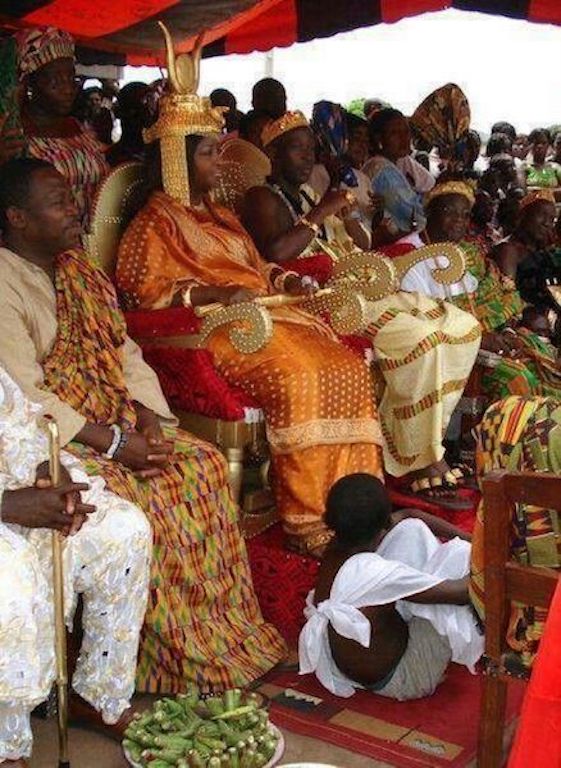
H.I.M Empress Shebah Sai 'Ra - Queen Shebah lll, Nubia-Sheba Nations Imperial Matriarch and Federation of Kingdoms and Thrones of the African Continent Kingdoms Federation, in 2008 Cote d'Ivoire inter-Kingdoms visit, media interview, with Cabinet and Royal Court, with the ancient Egyptian sun disk symbol at her head.
There are quite a few Websites online containing informatiion about the many various kind of Queen Mothers and courageous female warriors or warrior Queens in Africa, who have become famous because of their extraordinarily powerful ability to defend their people and act as their leaders out of their former lands, when threatend by patriarchal invadors and colonisers, following the strategy of avoidance or mobility as is delineated by James Woodburn being one of the main strategies practised in egalitarian HG societies:
But very few of these magnificient African Queens and warriors are viewed in the light of the underlying matriarchal deep structure of wich they have made up an integral part and / or still do, and which have fostered and supported their ability of wielding a skilful leadership. Instead they are mostly portrayed as astonishingly strong individual females and as such the exceptions of the common overall rule of male dominance, even in the African past and present culture and history, although matriarchy still up until present times in many places there has been the rule (See Ifi Amadiume)
As long as you are ignorant of the great difference between the underlying deep structure of a society whether it is patriarchal or matriarchal, you will be completely blind regarding the fact that what at the surface might look like a kingdom, in reality is a matriarchal queendom with the queen as "the headman" who inherit the royal office on her mother lineage, and the king is one of her sons or brothers elected by her to represent the royal clan to the outside and to assist as her executive deputy, without any authority to take decisions on his own.
Instead of the patriarchal way of using wars and violence for empire buildings, the matriarchal Queen Mothers create alliances with other matriarchal peoples by marrriage politics in wich the royal house itself get related to its people with close clan connections. Friends, guests, allies, indigenous residents, refugees, and even slaves are brought into the clans, and also to the royal lineage, in order to expand and connect to each other all of them, creating a society of relatives.
Furthermore the matriarchal clan mothers or queens also inherit the sacred office of being priestesses and / or shamans with the important task of acting as the mediators between the ancestors spirits and its living inherits and to act as rainmakers at the annual season when its time to make the soil fertile for the seeds to grow, as well as to supervise the daily religious rituals and the seasonal ceremonies in order to evoke the goodwill and blessing of The Great Goddesses in her three realms: in the sky, on the earth and in the underground and to offer her sacrifices.
And instead of letting themeslves into war with the patriarchal intruders who invade their lands, they have preferably used the strategy of avoidance or mobility to move away from their attackers, in order to find new land to settle and build their realms. This is specially the case for the Akan - people, which I will return to later.
Therefore, matriarchal realms are primarily characterised by the fact that
- they are socities of relationships
- they are always sacred cultures.
- they are alliances built through blood and affinity relationahip, held together by the strategy of avoidance when threatened, but never through conquest.
And these are special characteristics that distinguish matriarchal queendoms from patriarchal kingdoms and empires.
The plentitude of female leadership in African history thus bear witness of a totally different kind of system than the common patriarchal one that we take for granted as the only plausible and and normal. A fact that is steadily overlooked by the establidshed historians in the academies and therefore neither in public media.
Anyway the amount of power they currently wield has of course therefore also diminished since pre-colonial times.
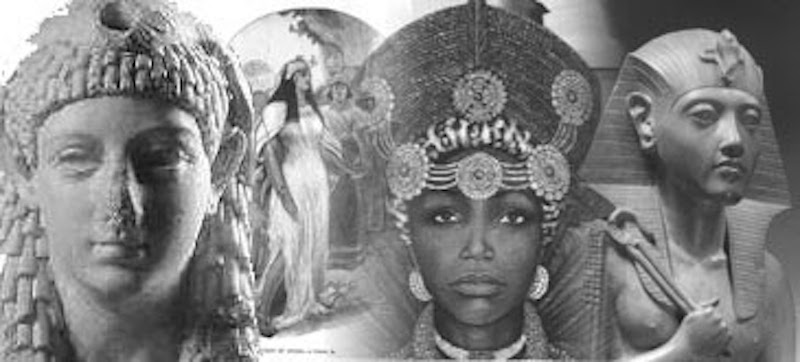
On this Website you may find information about a whole bunch of old African Queens and female warriors defendig their lands and peoples, many of them of whom I never heard before.
Here is a list of the many Queen mothers I have found online, not all of them reigning matriarchal queendoms; but still perhaps are representarive of the unusually high selfesteem among the African women as a heritage from earlier matriarchal times:
AFRICAN QUEEN MOTHERS
Shanakdakheto (ca. 170–160 BCE) or (ca. 170–150 BCE) Queen regnant of the Kingdom of Kush
Queen Amina of Zazzau 1536 1549
Nandi Mother of Shaka Zulu (1766-1827)
Nana Afia Ddokuaa-1817-1835 Ghana
Queen of Pemba East Africa -1679
Yaya Vita Kimpa of Kongo 1684-1706
Queen Regent Hangbe also known as Ahangbe or Na Hangbe, Regent of Dahomey (c. 1718)
Nehanda Charwe Nyakasikana Zimbabwe 1840-1898
Queen Sarraounia Mangou of Azna (1899

THE QUEEN MOTHERS KIND OF ORGANISATION OF HER REALM
To demonstrate the overall pattern of anarchichally organised queen realms, the Akan-people in Ghana may serve as a good example:
An Akan realm could not be established without a queen mother or ”Ohemma” and for that no king: ”Ohene” was needed. In fact every Akan realm has historically been founded by a queen mother, who only later chooses one of her sons to be placed on the throne as king and co-regent. But in times of crisis - for example, if the king were still a minor or was absent, or if the collapse of a realm forced an immediate exodus - the queen mother ruled alone She was then both Ohemmaa; female king, and Ohene, male king.
As in all matriarchies it´s the eldest woman of the clan who is considered to be the source of the clanlife and its center. And beyond being the mother of the matrilineal clan she is also the mediator between the clan deity and living members of the clan. The primordial ancestress of the clan isdeified and venerated as mother goddess of the clan, and the actual clan mother is her lates incarnation, and as such she is the authority of the religious life ceremonies and rituals and therefore considered to be sacred herself.
For the eldest woman of the royal clan, the queen mother its the same; she is considered to be the source of the royal lineage, and the mother of the ruling or future king; but of more importance is the fact that she is considered to be the mother of the whole society, which she herself, or her royal ancestors, has established by wisely joining various clans and people together. Thus considered to have ”born” the realm on her own, it belongs to her like a child belongs to its mother. As the most recent incarnation of the primordial deified ancestress she is considered to be mother of it all. Under her protection all of those who have got her sanctuary are untouchable and even today she has the right to grant pardons.
These features demonstrate clearly that in matriarchal context it is not the kingship, but the queenship that stands above the other; The queen mother being the one who has the last world and makes up the real power behind the throne, in the same way as in ordinary matriarchal clans, in which the clan mother is the "headman" and her son or brother is her delegated deputy to the outside world.
In the past when the African queen mothers had to move away with their clans and retinue to find new places to settle, they would use oracles and evoke the ancestral spirits to leed them on the perilous journey through the desert, thus acting in the role of shaman queens using all their intuiton and abilities to read the signs in nature.
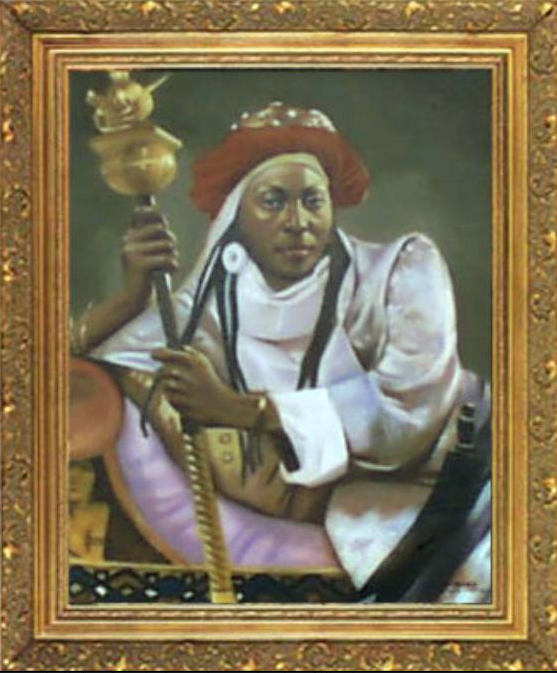
And this, of course, have resulted in a doubled up obscured history writing, as the African women have played at least as an important role as the African men. If not more so, as the great clan mothers / priestesses / queens who were founding and managing the age old ancient matriarchal societies, which eventually grew into the great and glorious realms of African queendoms in the middle ages, supervised by greatly honoured sacred queens, who either were defending their people against surrounding patriarchal attackers, or using the matriarchal strategy of avoidance (designated by the late researchers of egalitarian hunter ands gatherers according to this lecture of Jerome Lewis), by leading their people´s exodus out of its threatened dwellings, through the deserts of Sahara and other barren and dangerous surroundings in the region, until they met with more southern Bantu peoples in Western and Central Africa. Together with them they eventually made up alliances through matriarchal marriage lineages, held together by strong ideological / religious ties and taboos / music / dance / drumming and drama/ burlesque clowning i. e. "ngoma" which could be said to be a religion per se, a "wordless" such (See Jerome Lewis lecture about that) and unfolding in increasingly grewing chains of stateless anarchical clusters of extended families, supervised by the eldest clanmothers / priestesses and eventually also a sacred or several sacred queens, together with their brothers and sons, as these societies were all of them firmly grounded in their "religious believes" - or perhaps more adequate: in their special kind of matriarchal worldview, cosmology and spirituality
The role of the African women´s influence on the powerful development of the proud African history and culture and thereby even for our own, could thus not be overestimated.
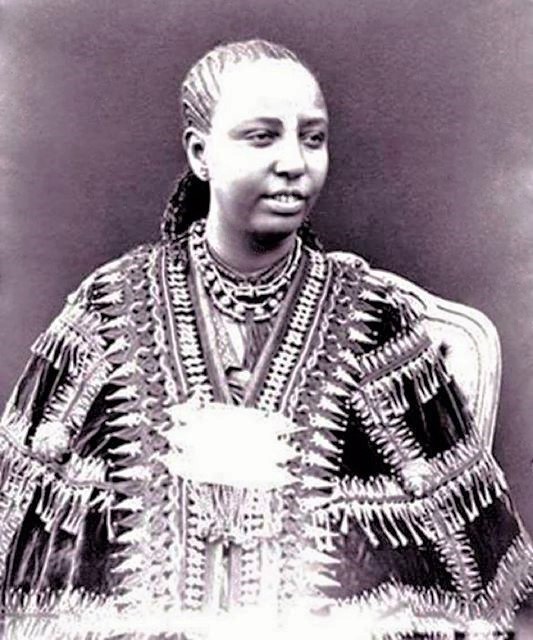
HISTORY OF WEST AFRICAN MATRIARCHIES ACCORDING TO MODERN MATRIARCHAL RESEARCH
So now, that we have got a little introduction to the very different kind of gender-thinking prevailing in African culture as late as up until the last century, and in some places even up until today (Se also Central Africa and Bemba / Luapula) we might perhaps be better prepared to look upon the following history writing by Heide Göttner Abendroth, with fresh and non ethno- and androcentric biased glasses, realising that the traditional African cultures are of a quite different kind, in comparison with our own.
Quoting Heide Göttner Abendroth in her great tutorial work, translated into English; Matriarchal Societies: Studies on Indigenous Cultures Across the Globe, 2012, in the chapter "Matriarchal Queenship in West Africa", in which her referents are Eva L. R. Meyerowitz and Robert S. Rattary, about whome she writes that we owe this opportunity for close examination to them, as well as to the new critical women ethnographers, as for example the Akan scholar Wilhelmina Donkoh who visits the World congresses i Matriatrchal Studies, and also Karla O Poewe, Audrey Richards and Annie Leubhof
Göttner Abendroth finds Eva Meyerowitz especially noteworthy, who was an anthropologist, artist and political advocate for the Akan people Bono Tekuiman, where she spent many years and included a lot of oral traditions into her books. As a token for their appreciation, the Bono-Tekyiman people awarded her the title and rank of "Queen Mother".
Furthermore she recommends the excellent critical works by Audrey I. Richards, Karla O. Poewe, Annie Lebeuf as providing very good insights in matriarchal African traditions. In contrast, she criticises the work of Lucy Mair as influenced by the theory of Claude Lévi Strauss, in which women are: (Quoting Göttner-Abendroth) "...are seen as nothing more than objects for exchange between men, without any sphere of action on their own. While this may be the case in certain patriarchal societies, the generalisation is unsubstantiated. This leads Lucy Mair into numerous confusing and contradictory assertions. Male ethnologists see African women´s situation much more negatively or don´t see it at all - a lack that is corrected by the research by Richards, Poewe and Lebeuf."
She also finds the Austrian anthropologist Hugo Bernatzik´s work trustworthy and Donald G. McNeil´s.
"For thousands of years in West as well as in Central and Southern Africa mighty hereditary queens held important positions, acting as regents or co-regents; this continued to some degree, until recently. This is not a question of scattered instances of individual queens ruling in patriarchal monarchies (such as Hatshepsut of Egypt, Elizabeth I of England, or Maria Theresia of Austria) but refer to situations where uninterrupted regency or co-regency by women was the norm.
In royal matriarchal clans power is fundamentally split in two, as it is in African matriarchal peoples: the king rules the world of men, while the queen, whose titles means `female king´, rules the world of women. However this is only the beginning of her power; as queenmother she is in fact mother of the royal line and of the ruling or future king. She places him on the throne, and is the only person who can admonish him in public; in certain circumstances, she can even unseat him. Symbolically associated with the land the people live on, she is owner of the sacred realm. This is consistent with these peoples´oral historical traditions, which rec. To save her threatened people and culture in times of crisis, the queen often took over the king´s duties in addition to their own and ruled simultaneously as `female king´ and `male king, adorned with the various regalia of each office. Africa´s history is full of female leaders whose courage and detarmination has been kept alive in memory of their peoples, and who still are highly venerated in ancestor religion.
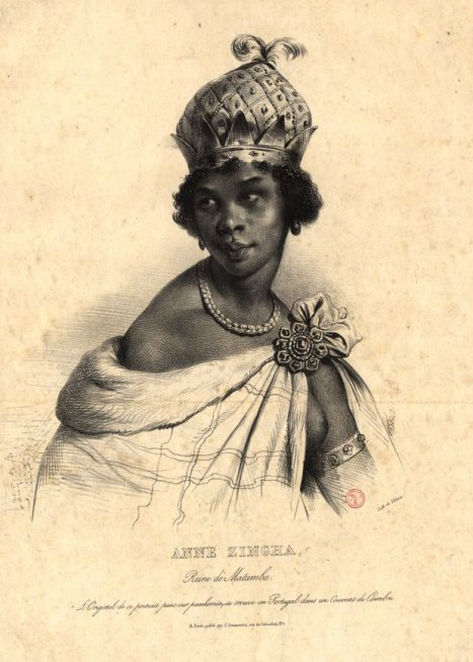
The memory of the many great Queens of Africa and their legendary deeds when for example leading them on their long exodus out from their former realms, where they were threatened by patriarchal newcomers, has been kept in mind by its people by their different kind of oral techniques and song traditions. In Issa´s tradition this task was the Griots, who often were former slaves which had been taken as prisoners in wars against for example the Arabic invadors in the 19th century, when also his brave female ancestors were exolled. The slaves were not badly treated but respected as human beings and were often eventually married into the clan it had served as slaves.
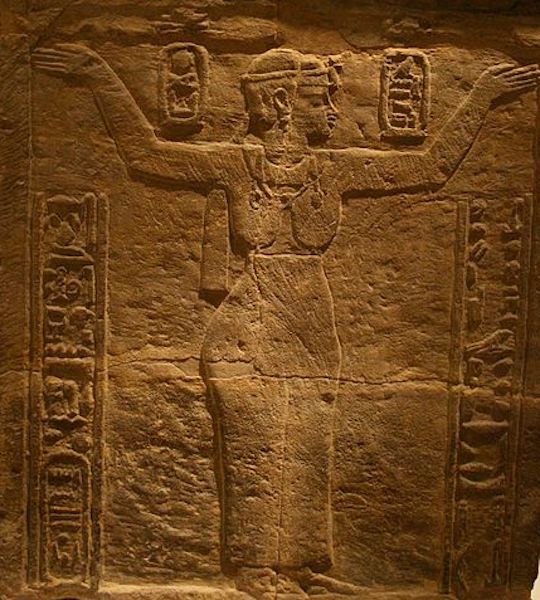
Relief of Amanitore Kandake, who rule c. 1–20 AD, found in Wad ban Naqa, a town of Meroë.
Now housed in the Egyptian Museum of Berlin. (Wikimedia Commons)
Ethiopia, (which is the same place as Kush or Nubia) seem to have had a strong and mighty matriarchal "queendom" tradition according to what is reported of on this website, although, if that´s the case, it doesn´t seem like its author: Marg Mowczko is aware of that, as she takes for granted that kings always are the real rulers, even if they are married to matriarchal queens.
CANDACE OF ETHIOPIA OR KANDAKE OF KUSH
Quoting Marg Mowczko:
"In his famous Church History, Eusebius mentions Philip the evangelist and the Ethiopian eunuch, and he wrote: “Ethiopia even to the present day is ruled, according to ancestral custom, by a woman” (2.1.13 cf. Acts 8:27). I found this piece of information intriguing and so I went on a bit of a search to find out if there is some truth in his statement. As it turned out, there is.
 There were several female rulers of Ethiopia or, more precisely, Meroë. Meroë was the capital city of the ancient Kingdom of Kush. Kush (also known as Nubia) was often called Ethiopia in the Bible.[1] The region that once belonged to the ancient Kushite kingdom lies mostly in modern-day Sudan, which is situated directly south of Egypt. (Modern-day Ethiopia is still further south.)
There were several female rulers of Ethiopia or, more precisely, Meroë. Meroë was the capital city of the ancient Kingdom of Kush. Kush (also known as Nubia) was often called Ethiopia in the Bible.[1] The region that once belonged to the ancient Kushite kingdom lies mostly in modern-day Sudan, which is situated directly south of Egypt. (Modern-day Ethiopia is still further south.)
Kandake (kendake or kentake), which means “great woman”, was used as a royal title or dynastic name for the queens of Meroë. Kandake is sometimes translated into English as “Candace” (e.g. Acts 8:27). Some of the kandakes ruled in their own right. Others ruled with their husbands: these queens were not merely consorts, they seem to have had equal power with the king. At least one kandake was the ruler while her husband was consort. Furthermore, some kandakes were warrior queens who led their armies into battle.
There were so many ruling and warrior queens that, like Eusebius, several other writers assumed that Meroë was ruled only by women. (Source) Strabo, a geographer and historian (d. 24 AD), Pliny the Elder, a renowned natural philosopher (23–79 AD), Dio Cassius, a Roman consul and historian (155–235 AD), and others refer to a few ruling kandakes in their writings, but today we know of several more.[2] “An impressive series of Nubian warrior queens, queen regents, and queen mothers, known as kentakes . . . are only appearing to the light of history through the ongoing deciphering of the Meroitic script.”[3]
Although this history is not about West Africa´s history it could be of interest as it is claimed by some historians that peoples from this parts of East Africa, eventually were driven longer westwards or southwards on the African continent by invading patriarchal peoples as well as by the increasingly."
QUEEN PAMPA, BIJAGOS
Okinka Pampa Kanyimpa, sometimes Kanjimpa (died 1930) was a queen-priestess of the Bijagos of Orango, in the Bissagos Islands of Guinea-Bissau. She lived in Angagumé.[1]
Okinka Pampa succeeded her father Bankajapa[2] as ruler of the island and keeper of its traditions around 1910, at a time when the government of Portugal was preparing to occupy the Bissagos archipelago as part of its territorial claims in Africa. She resisted their campaigns of pacification for some time before ultimately signing a peace treaty with them. At the same time, she implemented societal reforms that expanded the rights of women and ended slavery. Okinka Pampa died in 1930 of natural causes; her legacy is today still celebrated in the islands and on the mainland.[3] She was the last queen of the Bijago people.[4][5] Okinka Pampa is still worshiped throughout the archipelago, and her tomb may still be visited.[6]
YAA ASSANTANTEWA - THE STRONG WARRIOR QUEEN
Yaa Asantewa – Överbefälhavaren
Ingen kvinna är mer känd i historien om afrikanska reaktioner och svar på europeisk makt bättre än Nana Yaa Asantewa av Asante staten Edweso i Ghana. Hon var den militära ledaren för det som kallas ”Yaa Asantewa War”, som var det sista kriget mellan Asante och britterna, och under vilket hon blev kallad ”Joan D’Arc i Afrika” av britterna. Även om hon inte själv kämpade rent fysiskt i kriget så kämpade trupperna i hennes namn och hon gav order och försåg trupperna med krut.
10. Nefertiti
9. Gudit
8. Amina
7. Amanishaketo
6. Sheba
5. Yaa Asantewaa
4. Nzinga
3. Amanitore
2. Tiye
1. Amanirenas
The History Behind The Emotan Statue (by Uwagboe Ogieva)
"Edo - African women have been held high and in some cases deified. In Edo kingdom there were two female ruler; namely Ogiso Emose and Ogiso Orroro. Edo women played a very significant role in the building and successful administration of the great Benin kingdom. The popular festac, and master symbol of the Edoid nation was the head of "Idia Ne Iye Esigie" who was deified and honoured by Oba Esigie with the title of "Iyoba", based on her great contribution to the growth and development of the Benin empire. Talking about great women in African history beside Ogiso Emose, Ogiso Orroro, Idia Niyesigie was princess Emotan."
"In the last couple of years, black people all over the world have found and continue to take pride in what colonialist used to describe as primitiveness. They have come to realize that while these Europeans in one hand were condemning African culture and works of art made and adorn by Africans, they were carefully stealing and smuggling the great works of arts with the other hand. The interesting thing about African art in general is that they are closely tied to African history, spirituality and social life. Despite the lack of much consideration given to women in the Edo society today, Edo women of yesterday years were not only very recognise and respected, but the role they played in societies were greatly appreciated and rewarded respectivelly.
Emotan was an ordinary petty trader who used to sell foodstuffs in the Oba market during the reign of Oba Ewuare the Great which historians have placed at about 1440. She have been actually trading since the reign of Oba Uwaifiokun, who reign before Ewuare. Both these men were brothers.
Ewuare was one of those legends whose history will sound to modern days youngsters like fables rather than realities. Ewuare was a great king, a magician, reputable leader and warrior. He made many enemies and one of those was his brother Uwaifiokun. It was agaisnt this Emotan was helpful. Ewuare's brother, Uwaifiokun who was still reigning, had conspired with his cheifs to have Ewuare murdered. Emotan got the wind of the conspiracy, took the risk to unveiled it to Ewuare. She not only told Ewuare the plan to murdered him but joined to protect and hide him from being killed. Ewuare was saved thanks to her. When Ewuare became the Oba of the Benin Kingdom, Emotan became a favoured citizen. When she died Ewuare ordered that her body be buried at the Oba market in the n the same spot where she use to trade. A tree was ordered by the Oba to be planted on the gravesite. Not only that, Ewuare also deified Emotan who was worshipped as the mother of love and kindness. In the past every man attended all funeral procession, invested, celebrated, visited the tree and gravesite at the City Center.
Oba Ewuare Nogidigan also recognised one of his servant who saved him too from a terrible illness. He changed the name of Igodomigodo (The Edo Coutry) to "Edo" after his deified (servant) friend, who was able to save him from a sudden death in about same time with Emotan deitification. Before this time, the Edoland and country had been called the land of Igodomigodo. Oba Ewuare Ne ogidigan (The great), reign in Benin Kingdom about 1440 to 1473 in the second milenium. From Ewuare, Edo became the name of the Ancient Benin Kingdom, their language and territory.
Today in Benin City, Emotan's beautiful statue conspiciously stands where she was first Buried during the reign of Oba Ewaure Nogidigan. It is in this regard that one sees the permanent statue unveiled and lunched by Oba Akenzua II on march 20, 1954 in honor of Emotan in the heart of Benin City as a great gesture."
Den här artikeln av en Hanna Danielsson kopierade jag från en hemsida som heter AFROPÉ igår. Men idag när jag försöker gå in på den verkar den vara stängd. Så tyvärr kan jag vare sig länka till den eller be om tillstånd att få kopiera detta. Men jag chansar att det går bra ändå:
KVINNLIGA AFRIKANSKA IKONER ATT MINNAS
JUNI 11, 2015 REDAKTIONEN LÄMNA EN KOMMENTAR
av Hanna Danielsson
Under African History Month såg jag flera poster om afrikanska, kvinnliga ikoner, och blev glad över att någon hade tagit sig tid att sammanställa en ikonografi över kvinnor som många inte känner till. Här kommer min version, på svenska.
Funmilayo Ransome Kuti – Kvinnlig aktivist
År innan den andra vågen av feminism började ta form i väst, fans det en kvinna som gjorde sina egna aktivistvågor i Nigeria. Hon var en kvinna vid namn Funmilayo Anikulapo-Kuti.
Hennes feminism och demokratiska socialism ledde till skapandet av The Abeokuta women’s union (AWU) och senare Women’s International Democratic Federation (WIDF), organisationer och rörelser som understödde Kuti att främja kvinnors rätt till utbildning, sysselsättning och till politiskt deltagande.
När kung Alake Ademola av Egbaland ville beskatta kvinnor, gick Kuti och AWU klanen ut för att protestera genom att använda sloganen ”Ingen beskattning utan representation”. De var inte jämställda samhällsmedborgare och motsatte sig starkt att betala skatt innan orättvisorna hade försvunnit. När kvinnorna protesterade utanför Alake’s hus, sjöng de på språket yoruba:
”Alake, under en lång tid du har använt din penis som ett tecken på auktoritet och att du är vår husbonde.
Idag vänder vi på ordningen och använder vår slida för att spela rollen av mannen.”
Deras gemensamma och remarkabla ansträngningar resulterade i kungens abdikation.
Yaa Asantewa
Yaa Asantewa – Överbefälhavaren
Ingen kvinna är mer känd i historien om afrikanska reaktioner och svar på europeisk makt bättre än Nana Yaa Asantewa av Asante staten Edweso i Ghana. Hon var den militära ledaren för det som kallas ”Yaa Asantewa War”, som var det sista kriget mellan Asante och britterna, och under vilket hon blev kallad ”Joan D’Arc i Afrika” av britterna. Även om hon inte själv kämpade rent fysiskt i kriget så kämpade trupperna i hennes namn och hon gav order och försåg trupperna med krut.
Winnie Mandela – Presidentens fru
Winnie Mandela Foto: Fatou Touray, Afropé
Tjugo år av separation visade sig vara för mycket även för Mandelas. Den unga kvinnan Nelson Mandela kände när han satt blev fängslad var inte den medelålders kvinna som han återvände till när han blev frisläppt. Och hon, nu van vid att umgänget med unga manliga rebeller blev obekväm i närvaro av den gamle Nelson. När paret inledde en internationell resa efter Nelsons frigivning, strömmade folkmassor till för att se honom, den person de ansåg vara hjälten i kampen mot den sydafrikanska apartheidpolitiken. Vad dessa massor förmodligen inte visste så mycket om var Winnies aktivistiska arbete, hennes ledarskap och hennes frispråkiga motstånd mot vitt minoritetsstyre och att hon hade spelat en likvärdig roll i anti-apartheid kampen.
Margaret Ekpo – Den fashionabla feministen
Margaret Ekpo var känd för att vara en modern kvinna som kombinerade västvärldens och nigerianska modeinfluenser. Kanske möjliggjorde hennes bakgrund som sömmerska det för henne att ännu bättre uttrycka sin ”Afropolitan” livsstil via hennes kläder. Hon älskade sällskapsdans och var en hängiven kristen, men när det kom till hennes politiska aktivism, vilket var hennes riktiga kall, såg hon till att upprätthålla en bild av traditionella afrikanska värderingar, bära traditionella kläder och flätningar under sina politiska kampanjer.
Få kvinnor kan göra anspråk på att lämna så mycket i arv till sina landsmän som Maragaret Ekpo. Vid tiden för sin död lämnade hon efter sig ett arv av ”One Nigeria”, ”Women in Politics”, ”Women in business and leadership” och ”Emancipation for women”.
Miriam Makeba – Mama Afrika
Miriam Makeba Foto: Tom Beetz
En annan framträdande frispråkig och synlig motståndare till Sydafrikas apartheidregim var Miriam Makeba, även känd som Mama Africa, och kejsarinnan av afrikansk sång. Makeba var inte bara inblandad i radikal aktivitet mot apartheid men också i medborgarrättsrörelsen och sedan i Black Power movement. I själva verket var hon gift (om än kort) med Black Panther-ledaren Stokely Carmichael, som var hennes fjärde make av fem. Hon sade:
”Alla medger nu att apartheid var fel, och allt jag gjorde var att berätta för folk som ville veta var jag kommer ifrån hur vi levde i Sydafrika. Jag sade bara sanningen. Och om min sanning blev politisk, kan jag inte göra något åt det.”
Queen Nzinga – Reformisten
Också känd som drottning Jinga, är hon känd för att ha tilldelat platser till kvinnor på viktiga regeringskontor i dagens Angola. Två av hennes ledare i krig sägs vara hennes systrar, och hennes stab av rådgivare innehöll många kvinnor, bland annat hennes systrar, prinsessan Grace Kifunji och Mukumbu, senare drottningen Barbara, och kvinnor rekryterades för att ta plats i hennes armé. Nzinga organiserade en mäktig gerillaarmé, utmanövrerade några av hennes fiender och utvecklade allianser för att styra slavvägarna. Hon allierade sig även med holländarna att hjälpa henne stoppa den portugisiska erövringen. Efter en rad avgörande bakslag blev Nzinga tvungen att förhandla fram ett fredsavtal med portugiserna, men vägrade ändå att hylla den portugisiska kungen.
Nehanda Charwe Nyakasikana – Den andliga ledaren
Nehanda Charwe Nyakasikana var en kvinnlig andlig ledare från Mashonaland, Zimbabwe, och en viktig ledare i Första Chimurenga, eller ”befrielsekriget”, mot brittiska koloniala bosättare 1896-1897. Hon ansågs vara den kvinnliga inkarnationen av oraklet Nehanda. Efter att ha blivit tillfångatagen av britterna, förutspådde hon att hennes ande skulle leda den andra Chimurengan mot britterna, som så småningom kulminerade i dagens oberoende Zimbabwe.
Empress Taytu Betul
Taytu Betul – Drottning och kejsarinna av Etiopien
Betul prisas för sin roll som en slug politisk ledare som bidrog till att avhysa italienska imperialister. Hon och hennes man (kejsar Menelik II) var ledande i Slaget vid Adua (1896), mellan etiopiska och italienska styrkor, ett slag som Etiopien vannn. Taytu Betul var en inflytelserik politisk ledare.
Huda Shaarawi – Feministisk ledare och nationalist
Shaarawi talade för kvinnofrågor och deltog i den Egyptiska nationalistiska kampen. Hon etablerade den egyptiska Feminist Union (1923), och var den som grundlade den arabiska Feminist unionen – för att nämna några av hennes prestationer.
Gisèle Rabesahala – Madagaskisk politiker
Rabesahala var den första madagaskiska kvinnan att väljas till kommunalråd (1956), politisktpartiledare (1958), och att utses till minister (1977). Den hyllade ledaren grundade också Imongo Vaovao tidningen, och är mest känd för att ha ägnat sitt liv åt kampen för Madagaskars självständighet, och att förespråka mänskliga rättigheter.
Wangari Maathai Foto: Antônio Cruz/ABr
Wangari Maathai -Miljöaktivist
Med Nobels fredspris (2004) belönades Wangari Maathai, grundare av den välrenommerade Green Belt Movement 1977, som förespråkar att plantera träd för att bekämpa miljöförstöring. Hon är också känd för kampen för mänskliga rättigheter.
T H E M A T R I A R C H A L H I S T O R Y O F W E S T A F R I C A »
T H E A N A R C H I C A L O R G A N I S A T I O N
O F M A T R I A R C H A L Q U E E N R E A L M S »
A K A N A N D A S H A N T E
I N G H A N A A N D T H E I V O R Y C O A S T »
T H E A K A N Q U E E N M O T H E R ´ S M A T R I A R C H A L S Y S T E M S»
M A T R I A R C H A L A K A N K I N G S »
E M E R G I N G P A T R I A R C H A L T E N D E N C I E S I N A K A N R E A L M S »
B A C K T O H O M E P A G E: